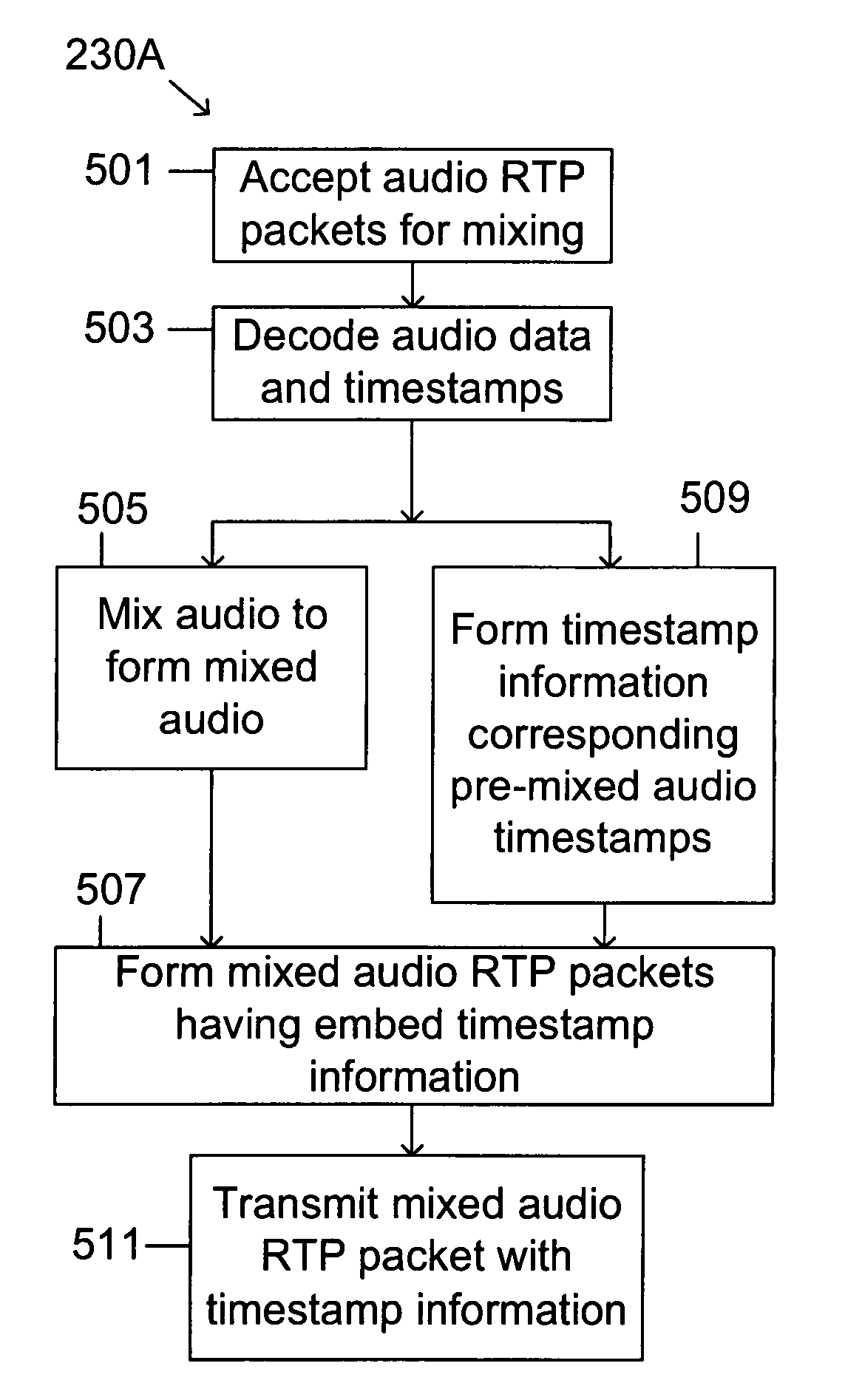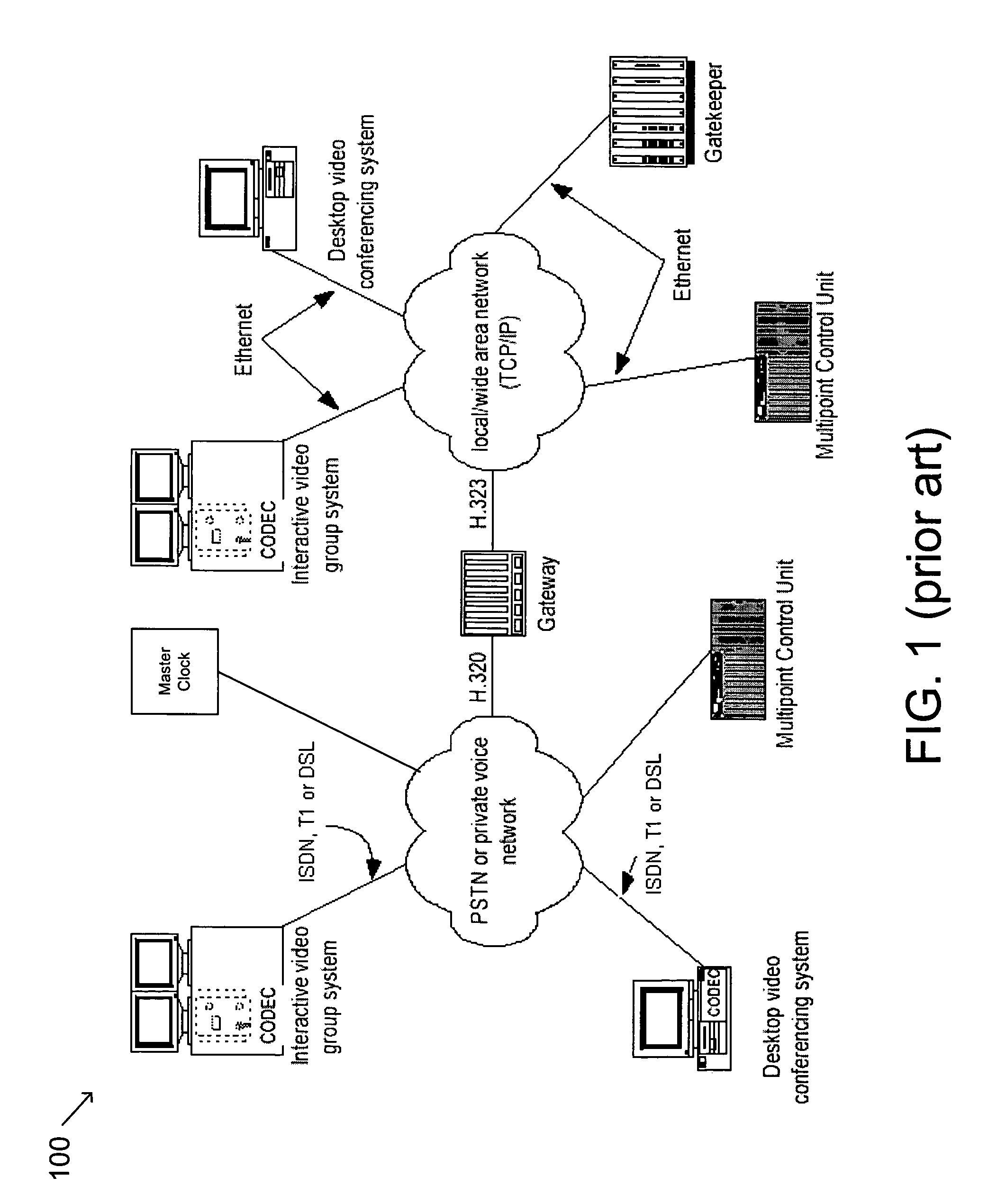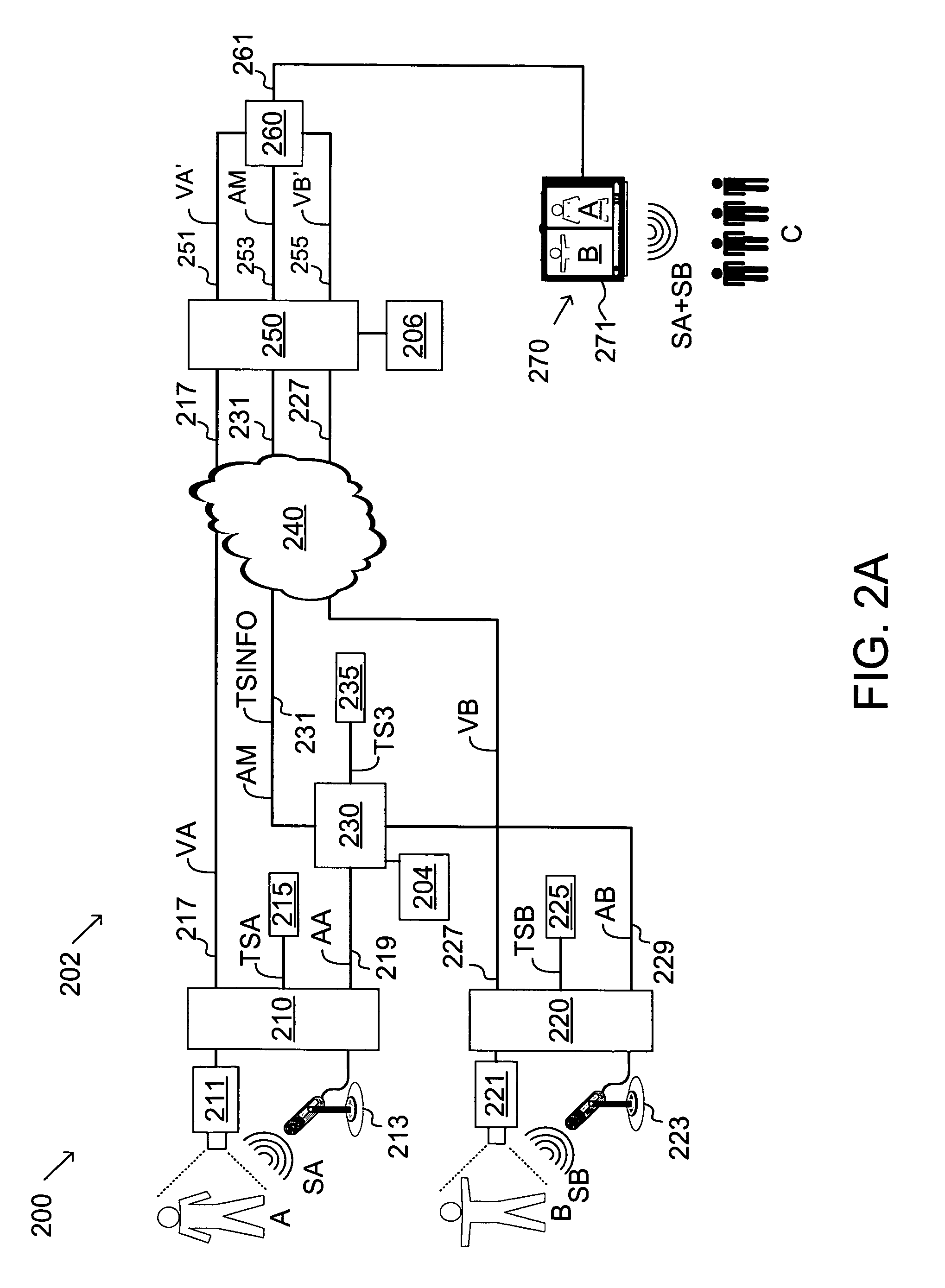Audio-to-video synchronization system and method for packet-based network video conferencing
a video conferencing and audio-to-video technology, applied in the field of multimedia communication systems, can solve the problems of adding an appreciable overhead, not being able to synchronize streams based on an accurate clock time, and not inherently providing real-time communication in packet networks
- Summary
- Abstract
- Description
- Claims
- Application Information
AI Technical Summary
Benefits of technology
Problems solved by technology
Method used
Image
Examples
first embodiment
[0065]The use of the above equations will be used to illustrate specific embodiments of the present invention without limiting the scope of the present invention. FIG. 3A is a schematic of a first embodiment synchronizing packet network 202A of the present invention for implementing the system of FIG. 2A, including an ingress-mixer 230A having an ingress 311A and a mixer 309, and a synchronizer-egress 250A having a timestamp stripper 301A, a timestamp memory 303, a video A synchronizer 305, a video B synchronizer 307, and a synchronization buffer 308. FIGS. 4A and 4B illustrate two RTP packet embodiments AM+TSINFO, and FIGS. 5A and 5B, are flow charts of steps performed by ingress-mixer 230A and synchronizer-egress 250A, respectively.
[0066]The operation of packet network 202A in updating video streams VA and VB with timestamps synchronized with mixed audio stream AM is illustrated in the flowcharts of FIGS. 5A and 5B. RTP packets containing audio from streams AA and AB are accepted ...
second embodiment
[0076]A second embodiment synchronizing packet network is illustrated in the FIG. 3B as a schematic of network 202B of the present invention including an ingress-mixer 230B having an ingress 311B and a mixer 309, and a corresponding synchronizer-egress 250B having a timestamp stripper 301B, a timestamp memory 303, a video A synchronizer 305, a video B synchronizer 307, and a synchronization buffer 308. FIG. 4C illustrates an RTP packet embodiments, and FIGS. 6A and 6B, are flow charts of steps performed by ingress-mixer 230B and synchronizer-egress 250B, respectively.
[0077]The embodiment of FIG. 3B differs from that of FIG. 3A in that timestamp information TSINFO is sent in packets different than the AM data. Thus, for example, the data packets shown in FIG. 4C include shows as a mixed audio RTP packet AM and a separate timestamp information RTP packet TSINFO. Both AM and TSINFO packets are sent from the ingress point to the egress point, as explained subsequently. In an alternative...
third embodiment
[0080]FIG. 7 is a schematic of a third embodiment synchronizing packet network 202C in which synchronization occurs separately from egress. Network 202C has terminals 210 and 220 and ingress-mixer 230 connected through a first WAN network 703 to a synchronizer 701, whose operation is shown in the flowchart of FIG. 8, and a composer 260, and further connected through a second WAN network 705 to a synchronizer-egress 250 to a terminal 270.
[0081]Network 202C illustrates the use of timestamp information TSINFO at different network locations. In particular, the operation of synchronizer 701 is similar to synchronizer-egress 250, except that it does not perform the egress function of removing of timestamp information. As shown in FIG. 8, synchronizer 701 includes a block 801 the provides mixed audio RTP packets without stripping TSINFO, since TSINFO is required by synchronizer-egress 250 to synchronize the streams after leaving second network 705. Synchronizer 701 also includes the steps ...
PUM
 Login to View More
Login to View More Abstract
Description
Claims
Application Information
 Login to View More
Login to View More - R&D
- Intellectual Property
- Life Sciences
- Materials
- Tech Scout
- Unparalleled Data Quality
- Higher Quality Content
- 60% Fewer Hallucinations
Browse by: Latest US Patents, China's latest patents, Technical Efficacy Thesaurus, Application Domain, Technology Topic, Popular Technical Reports.
© 2025 PatSnap. All rights reserved.Legal|Privacy policy|Modern Slavery Act Transparency Statement|Sitemap|About US| Contact US: help@patsnap.com



